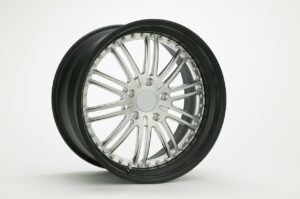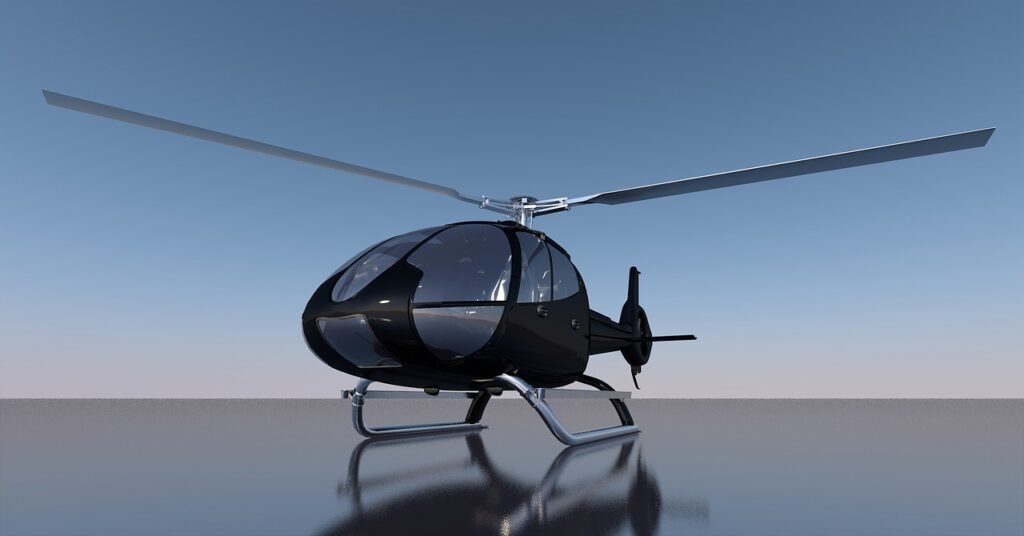The angular velocity is the angular displacement per time of a body on an axis during circular motion or oscillation. Angular velocity examples in daily life are:
- Ferris wheel
- Race Car on the racetrack
- Earth revolution
- A rock tied with a rope and spinning around
- Ceiling and Electric Fan
- Simple Pendulum
- Wheels
- Hands of clock
- Blades of Helicopter
- The motion of electrons around the nucleus
- Satellites orbiting around planets
- Electric Beater
- Washing Machine
- Yo-Yo
- Swing
Ferris wheel
The Ferris wheel moves in a circular motion. Due to the rotation, its angle changes and it attains angular velocity. Most of the time the angular velocity remains constant, that is it moves with uniform velocity but on the top and bottom position, the velocity gets accelerated. Due to the changes in velocity that leads to centripetal acceleration the rider feels heavy or light at the bottom and top position. Ferris Wheel is the basic example of an object moving in a circular motion with angular velocity.
Race Car on the racetrack
When a body moves on a straight path it has only a linear component of velocity. But if we take the example of a race car running on the race track then the angular velocity also comes into action. The racetracks are circular or they have curves. When the car turns on the track the angle changes with time and hence the car attains angular velocity.
Earth revolution
The Earth and all the other planets revolve around the sun in a circular orbit. When they revolve their phase, that is angle keeps changing with respective time. This leads to the emergence of orbital angular velocity in Earth and heavenly bodies that revolve around the Sun. As planets go closer to the sun their angular velocity increases. This is due to an increase in gravitational pull and hence to maintain the angular momentum the angular velocity rises.
Rock tied with a rope and spinning around
When a rock tied with a rope or string is spun around, it orbits in a circular motion. Due to which the angle of the rock keeps changing concerning time. The angular displacement leads to the development of the angular velocity of the rock spinning around. This velocity is always direct along the axis of rotation. The centripetal force pushes the rock to gain angular velocity and allows their spinning. To gain maximum angular velocity a string with a shorter length is needed and vice versa. The angular momentum of the rock remains conserved at every point of the motion.
Ceiling and Electric Fan
On switching the ceiling or electronic fans they start rotating. It spins in a circular motion and completes the cycles. The angular velocity of the fan is measured as the revolutions that it completes in a given time. The angular velocity of the fan changes by increasing and decreasing the speed. When the velocity changes the fan gets angular acceleration.
Simple Pendulum
The simple pendulum is a small bob hanging from a massless string. On striking the bob the pendulum starts oscillating from mean position to extreme points at both ends. While oscillating the pendulum keeps changing the phase which leads to the angular velocity. The angular velocity is the same concept as linear velocity, the difference is the type of motion. The angular velocity of the pendulum is never constant. When it reaches the endpoints the velocity tends to 0 but never becomes completely negligible. For pendulum one should be careful to not confuse the angular velocity with angular frequency.
Wheels
The rotation and motion of wheels is the most common example of angular velocity in everyday life. The wheels keep rotating on a fixed axis and keep changing the phase. The angular velocity is calculated by dividing the angle change with time. The angular component of the velocity of the wheel is also determined by specifying the revolution completed by the rotating wheel. The one revolution of the wheel is equal to 2π. Now suppose that the wheel completes 6 revolutions in one minute, then the angular speed would be 12π radians per minute.
Hands of clock
The minute hand and second hand of the clock keep rotating all day long at a fixed axis. Due to their rotation, their angle changes concerning time. Both of their velocities are different as they complete a different number of revolutions in a given time. It gives the idea about how fast the hands of the clock are moving.
Blades of Helicopter
The blades of the helicopter start rotating as the engine starts. On rotation, the blades change the angle and complete the cycle. The number of cycles that it completes in a given time constitute the angular velocity of the helicopter. It is due to this velocity that the helicopter moves upward. The blades are rotated with an angular velocity which pushes the air downwards and uplifts the helicopter.
The motion of electrons around the nucleus
In an atom, the negative subatomic particle i.e. electrons revolve around the nucleus in a uniform circular orbit. They move with angular speed which remains constant throughout the motion. Hence the electrons do not radiate energy while revolving. The angular component of the velocity of an electron is inversely proportional to its orbital number. The electrons which are nearer to the nucleus will have greater angular velocity rather than those farther from the nucleus. Along with the revolution, the electrons further spin on their own axis that also contributes to their angular velocity.
Satellites orbiting around planets
The motion of satellites around the planets is analogous to electrons’ revolution around the sun or we can say the other way around. The satellite orbits on a circular path around the planets to provide information about them. When they revolve there emerges angular velocity that helps in their motion. When the angular velocity of the satellite changes then the angular acceleration generates. To keep itself moving in orbit, the satellite speed remains near to constant.
Electric Beater
The electric beater is another device that has an angular component of velocity. When we switch on the beater its blade starts rotating on an axis. This rotation leads to the angular speed of the electric beater. Greater the angular speed greater would be the intensity with which the blade would move and faster the product would be whisked.
Washing Machine
The washing machine is another example of angular velocity. When the machine operates it spins and rotates on a fixed axis. The uniform circular motion brings the angular velocity into action. The centripetal force and the angular velocity contributes to the mechanism of the washing machine.
Yo-Yo
Yo-yo is a simple toy that swings due to its angular velocity. When we throw the yo-yo it starts swinging and spinning to climb to the string. Its angular velocity keeps changing and hence it gets angularly accelerated.
Swing
The swings in the children’s park is also an example of angular velocity. It swings back and forth at continuous intervals. Moving ahead it makes an angle and with the same angle, it moves backwards. The change in angle leads to the emergence of the angular speed of the swing. Both the angular and linear velocity component helps in the swinging.
Hi,
I am Rabiya Khalid, I have completed my masters in Mathematics. Article writing is my passion and I have been professionally writing for more than a year now. Being a science student, I have a knack for reading and writing about science and everything related to it.
In my free time, I let out my creative side on a canvas.









